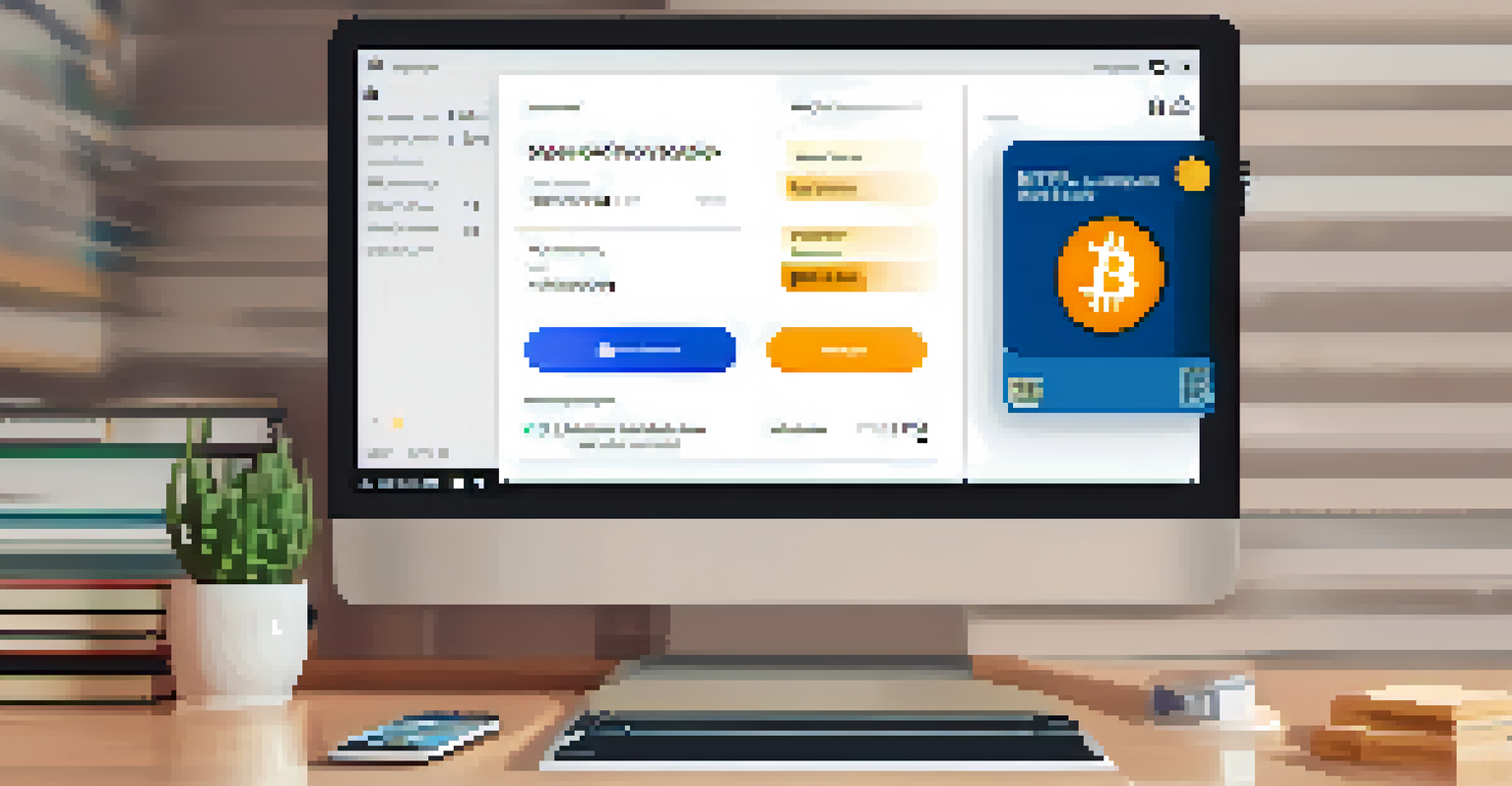Fraud in the NFT Market: Recognizing and Avoiding Scams

Understanding the NFT Landscape and Its Vulnerabilities
The NFT market has exploded in popularity, drawing in artists, collectors, and investors alike. However, with this surge comes a heightened risk of fraud, as bad actors look to capitalize on unsuspecting participants. Understanding the unique characteristics of NFTs—such as their digital ownership and scarcity—can help you navigate this exciting yet treacherous terrain.
In the world of digital art, the best way to protect yourself is to be informed and vigilant.
NFTs, or non-fungible tokens, are unique digital assets that represent ownership of a specific item, often in the form of art or collectibles. Their value can fluctuate wildly, making them attractive for both genuine collectors and scammers. By familiarizing yourself with how NFTs work, you can better identify red flags that may indicate fraudulent activity.
The decentralized nature of blockchain technology can provide a false sense of security. While transactions are recorded transparently, the anonymity of users can make it difficult to track down scammers. Therefore, understanding these vulnerabilities is essential for anyone looking to invest or collect in the NFT space.
Common Types of NFT Scams to Watch Out For
There are several types of scams prevalent in the NFT market, and recognizing them is your first line of defense. One common scam involves fake NFT listings, where scammers create counterfeit items that appear legitimate. If you encounter an NFT that seems too good to be true, it likely is—especially if the price is significantly lower than similar items.

Another prevalent scam is the phishing attack, where scammers trick users into revealing their private keys or wallet information. This can happen through fake websites or misleading emails that look official. Always double-check URLs and never provide sensitive information unless you are certain of the site's legitimacy.
Beware of NFT Scams
The NFT market is rife with scams, making it crucial for participants to recognize red flags and protect their investments.
Lastly, there are rug pulls, where developers abandon a project after investors have poured money into it. This usually happens in newly launched NFT collections that lack credibility. Being aware of these common scams can help you stay vigilant and protect your assets in the NFT market.
Red Flags: Signs That Something Might Be a Scam
Recognizing the red flags of potential scams can save you from losing your hard-earned money. One major sign is a lack of transparency; if the creators of an NFT project are anonymous or provide little information about themselves, it’s a cause for concern. Legitimate developers often share their backgrounds and roadmaps to build trust with their community.
The best defense against scams is knowledge and community engagement.
Another red flag is overly aggressive marketing, such as pressure tactics urging you to buy quickly before prices rise. Scammers often create a false sense of urgency to rush decisions. Take your time to research and think critically before making any purchases, especially in a market as volatile as NFTs.
Lastly, watch out for projects that promise guaranteed returns or extraordinary profits. The NFT market is unpredictable, and anyone claiming otherwise is likely trying to deceive you. Keeping an eye out for these red flags can help you make more informed choices in your NFT journey.
Researching NFT Projects: How to Do It Right
Before diving into any NFT project, thorough research is essential. Start by looking into the creators' backgrounds—check their previous works and community engagement. A reputable creator will often have a history of successful projects and a visible presence in the NFT community.
Next, examine the project's community. Active engagement on platforms like Discord or Twitter can be a good indicator of legitimacy. If the community is vibrant and the creators interact with their audience, it often signifies that the project is grounded in genuine interest rather than a quick cash grab.
Research NFT Projects Thoroughly
Conducting thorough research on creators and community engagement can help you identify legitimate NFT projects and avoid pitfalls.
Finally, ensure that the project has a clear roadmap and defined goals. Understanding the project's purpose and future plans can help you gauge its potential value. A well-structured project will provide insights into its long-term vision and how it plans to sustain its value in the ever-evolving NFT landscape.
Using Secure Wallets to Protect Your NFTs
One of the best ways to protect your NFTs is by using secure wallets. There are two main types: hot wallets, which are online and convenient, and cold wallets, which are offline and offer heightened security. For serious collectors or investors, cold wallets are often recommended as they are less susceptible to hacking.
When setting up your wallet, ensure that you enable two-factor authentication (2FA) wherever possible. This adds an extra layer of security to your account and makes it harder for scammers to access your funds. Keeping your private keys secure and never sharing them is critical, as anyone with access can control your NFTs.
Additionally, consider using wallets that offer integrated security features, such as alerts for suspicious transactions. Being proactive about your digital security can significantly reduce the chances of falling victim to scams in the NFT space.
Staying Informed About NFT Market Trends
The NFT market is constantly evolving, and staying informed about trends can help you make better decisions. Following reputable news sources and joining NFT-focused communities can provide valuable insights into market shifts and emerging technologies. Knowledge is power, especially in a space that can change overnight.
Participating in forums and groups can also keep you updated on common scams circulating in the community. Members often share their experiences and warnings about fraudulent activities, which can be an excellent resource for newcomers. Engaging in these discussions fosters a sense of community and shared knowledge.
Secure Your NFTs with Wallets
Using secure wallets, such as cold wallets, alongside enabling two-factor authentication, is essential for protecting your NFTs from theft.
Lastly, attending webinars or workshops can be beneficial. Many experts share tips on identifying scams and navigating the NFT landscape effectively. Continuous learning is key to safeguarding your investments and maximizing your opportunities in the NFT market.
What to Do If You Encounter a Scam
If you find yourself in a situation where you’ve encountered a scam, acting quickly is crucial. First, document everything—take screenshots of the website, transactions, and communications. This information can be invaluable if you decide to report the scam to authorities or platforms.
Next, report the scam to the relevant platform or marketplace. Many NFT marketplaces have procedures in place to handle fraudulent activity, and your report could help prevent others from falling victim to the same scam. Additionally, consider sharing your experience on social media or forums to raise awareness within the community.

Lastly, if you’ve lost a significant amount of money, consider contacting local law enforcement, as they may be able to assist. While recovering funds can be challenging, taking these steps can help protect others and contribute to a safer NFT environment.